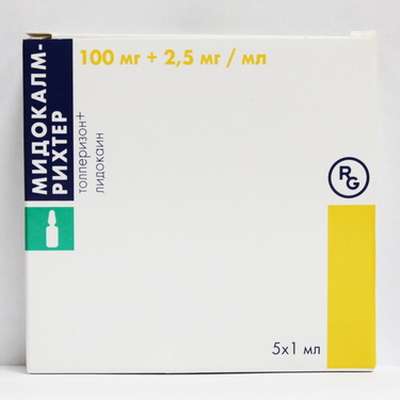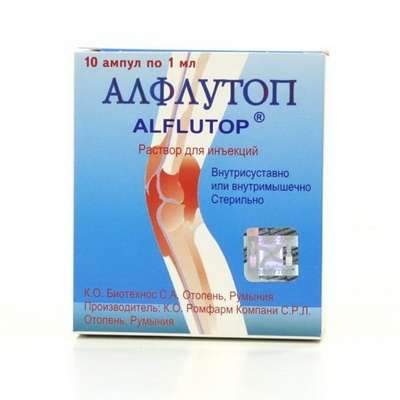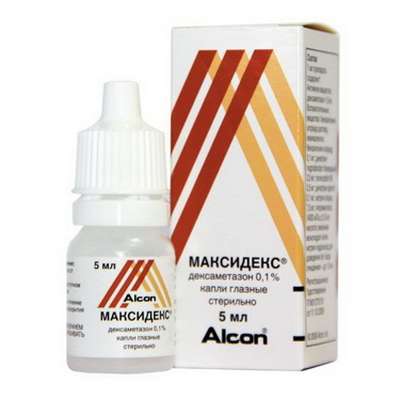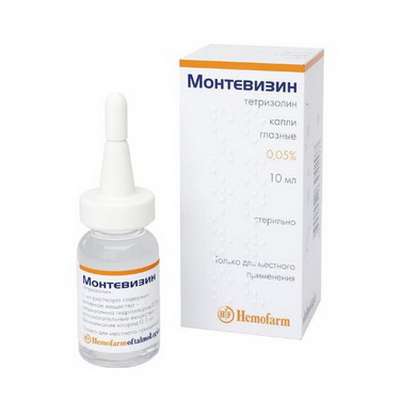Instruction for use: Nurofen UltraCap
I want this, give me price
Active substance Ibuprofen
ATX code M01AE01 Ibuprofen
Pharmacological group
NSAIDs - Propionic acid derivatives]
Nosological classification (ICD-10)
G43 Migraine
The pain of migraine, Migraine, hemiplegic migraine, Migraine headache, A migraine attack, Continuous headache, hemicranias
J06 Acute upper respiratory infections of multiple and unspecified
Frequent colds viral diseases, Infections of the upper respiratory tract, Acute respiratory disease influenza character, for colds Pain, Acute colds,Cold, respiratory infection,Seasonal colds, Pain in infectious and inflammatory diseases of the upper respiratory tract, Bacterial infections of the upper respiratory tract, Bacterial respiratory infections, Viral disease of the respiratory tract, Viral respiratory tract infections, Inflammatory disease of the upper respiratory tract, Inflammation of the upper respiratory tract disease, Inflammation of the upper respiratory tract illness with difficult sputum, Inflammatory airway disease, Secondary infections with colds, Shortness of sputum in acute and chronic respiratory diseases, Upper respiratory tract infection, Infections of the upper respiratory tract, Respiratory Tract Infections, Infections of the respiratory tract and lungs, Infectious-inflammatory diseases of the upper respiratory tract, Infectious-inflammatory diseases of the upper respiratory tract and ENT-organs, Infectious-inflammatory diseases of the upper respiratory tract in children and adults, Infectious-inflammatory diseases of the upper respiratory tract, Infectious inflammation of the airways,respiratory infection, Qatar upper respiratory tract, Catarrh of the upper respiratory tract, Catarrhal disease of the upper respiratory tract, Catarrhal symptoms of the upper respiratory tract, Coughing with a cold, SARS, ARI, ARI with rhinitis phenomena, Acute respiratory infection, Acute infectious and inflammatory disease of the upper respiratory tract, Acute respiratory disease, Sore throat or nose, Respiratory viral infections, Respiratory diseases, Respiratory infections, Recurrent respiratory infections, Secondary infection with influenza, cold in the chest, Feverish condition with flu usitis, acute sinusitis, genyantritis, purulent sinusitis
J11 Influenza, virus not identified
Flu, Influenza in the early stages of the disease, Flu in children, cold in the chest, Begins flu-like condition, Acute disease parainfluenza, parainfluenza, parainfluenza state, influenza epidemics, The pains of the flu, Influenza
K08.8.0 * Painful toothache
Dentinal pain, Dentinal pains, Pain pulpitis, Anesthesia in dentistry, Pain syndromes in dental practice, Pain after removal of tartar, Pain when extracting a tooth, Toothache, Pain after dental interventions
M35.3 Rheumatic polymyalgia
Pseudoarthritis rhizomelic, Rheumatic polymyalgia, Pain syndrome in rheumatic diseases, Muscle pain with rheumatism, Extra-articular rheumatism, Extra-articular rheumatic syndrome, Extra-articular rheumatic diseases, Extra-articular rheumatic soft tissue injury, Extra-articular forms of rheumatism, Rheumatic soft tissue damage, Rheumatism of soft tissues, Rheumatic diseases of soft tissues, Rheumatic diseases of the periarticular soft tissues, Rheumatic affections of soft tissues, Rheumatic collagen diseases
M54.5 Pain below the back
Pain in the lower back, Lumbar pain, Lumbalia, Painful conditions of the spinal column, Back pain, Lower Back Pain Syndrome
M79.1 Myalgia
Myofascial pain syndromes ,Pain syndrome in musculo-articular diseases, Pain syndrome in chronic inflammatory diseases of the musculoskeletal system, Pain in the muscles, Tenderness of muscles, Muscular soreness in severe physical exertion, Painful conditions of the musculoskeletal system, Pain in the musculoskeletal system, Pain in the muscles, Pain at rest, Muscle aches, Muscle pain, Musculoskeletal pain, Myalgia, Muscle pain, Muscle pain at rest, Muscle pain, Muscular pain of non-rheumatic origin, Muscle pain of rheumatic origin, Acute muscle pain, Rheumatic pain, Rheumatic pains, Myofascial syndrome, Fibromyalgia
M79.2 Neurology and neuritis, unspecified
Pain syndrome with neuralgia, Brachialgia, Occipital and intercostal neuralgia, Neuralgia, Neuralgic pain, Neuralgia, Neuralgia of intercostal nerves,Neuralgia of the posterior tibial nerve, Neuritis, Neuritis traumatic, Neuritis, Neurological Pain Syndromes, Neurological contractures with spasms, Acute neuritis, Peripheral neuritis,Post-traumatic neuralgia,Severe pain of a neurogenic nature, Chronic neuritis, Essential neuralgia
N94.6 Dysmenorrhea Unspecified
Pain during menstruation, Functional disorders of the menstrual cycle, Menstrual cramps, Emmeniopathy, Pain during menstruation, Painful menstrual irregularities, algomenorrhea, algomenoreya, Pain smooth muscle spasm, Pain spasm of smooth muscles (renal and biliary colic, intestinal spasms, dysmenorrhea), Pain spasm of smooth muscles of internal organs (kidney and biliary colic, intestinal spasms, dysmenorrhea), Disalgomenoreya, dysmenorrhea, Dysmenorrhea (essential) (Exfoliative), menstrual disorder, menstruation painful, metrorrhagia, Violation of the menstrual cycle, Menstrual irregularities, Prolaktinzavisimoe menstrual disorders, Prolaktinzavisimoe menstrual dysfunction, Pain spasm of smooth muscles of internal organs, Spasmodic dysmenorrhea, Primary disalgomenoreya
R50.9 Fever unstable
Symptoms of fever, Increased body temperature, Unexplained feverish conditions
R51 Headache
Pain in the head, Cephalgia, Pain with sinusitis, Pain in the back of the head, Painful headache, Headache of vasomotor genesis, Headache of vasomotor origin, Headache with vasomotor disorders, Headache, Neurological headache, Serial headache
R52.9 Unspecified Pain
Pain after cholecystectomy, Pain shooting, Non-malignant pain, Obstetric and gynecological pain, Pain syndrome, Pain in the postoperative period, Pain in the postoperative period after orthopedic surgery, Pain of inflammatory genesis, Pain than cancer genesis, Pain syndrome after diagnostic procedures, Pain after surgery Diagnostic, Pain after surgery, Pain after orthopedic surgery, Pain after injuries, Pain after the removal of hemorrhoids, Pain at the non-rheumatic inflammation of nature, Pain in inflammatory lesions of the peripheral nervous system, Pain in diabetic neuropathy, Pain in acute inflammatory diseases of the musculoskeletal system, Pain when the tendon pathology, Pain smooth muscle spasm, Pain spasm of smooth muscles (renal and biliary colic, intestinal spasms, dysmenorrhea), Pain spasm of smooth muscles of internal organs, Pain spasm of smooth muscles of internal organs (kidney and biliary colic, intestinal spasms, dysmenorrhea), Pain in trauma syndrome, Pain with injuries and after surgical interventions, Pain in chronic inflammatory diseases of the musculoskeletal system, Pain with duodenal ulcer, Pain syndrome in gastric ulcer, Pain syndrome in gastric ulcer and duodenal ulcer, pain, Pain during menstruation, pain syndromes, painful condition, Painful foot fatigue, Sore gums when wearing dentures, Soreness of the cranial nerves exit points, Painful menstrual irregularities, Painful dressings, Painful muscle spasm, Painful teeth growth, Melosalgia, Pain in the area of the surgical wound, Pain in the postoperative period, Pain in the body, Pain after diagnostic procedures, Pain after orthopedic surgery, Pain after surgery, The pains of the flu, Pain in diabetic polyneuropathy, Pain for burns, Pain during sexual intercourse, Pain during diagnostic procedures, Pain during therapeutic procedures, for colds Pain, Pain in sinusitis, Pain in trauma, Pain traumatic, The pain in the postoperative period, Pain after diagnostic procedures, The pain after sclerotherapy, Pain after surgery, postoperative Pain, Pain postoperative and posttraumatic, posttraumatic pain, Pain when swallowing, Pain in infectious and inflammatory diseases of the upper respiratory tract, The pain of burns, The pain in traumatic muscle injury, Pain in trauma, The pain of tooth extraction, The pain of traumatic origin, Pain caused by spasm of smooth muscles, Expressed pain syndrome, Expressed pain syndrome, traumatic origin, Postoperative pain, Post-traumatic pain, Post-traumatic pain syndrome, Torpid pain, Traumatic pain, Traumatic pain, Mild pain, Moderately severe pain, Moderate pain, Polyarthralgia with polymyositis
Composition and form of release
Capsules 1 caps.
ibuprofen 200 mg
auxiliary substances: macrogol 600; alpha-tocopherol succinate (vitamin E); Povidone K17
gelatin capsule: gelatin; liquid maltitol; sorbitol 76% solution; dye crimson (Ponso 4R); opaque NS-78-18011 (titanium dioxide, propylene glycol, hypromellose, isopropanol, purified water)
in the blister is 4 or 10 pcs .; in a pack of cardboard 1 blister.
Description of dosage form
Hard gelatinous translucent capsules of the oval form of red color with an inscription of white color - "NUROFEN", containing a transparent liquid from colorless to slightly pink.
Characteristic
Refers to the NSAID.
pharmachologic effect
Pharmacological action - anti-inflammatory, antipyretic, analgesic.
Pharmacodynamics
Non-selectively blocks COX-1 and COX-2. The mechanism of action of ibuprofen is caused by inhibition of the synthesis of PG mediators of pain, inflammation and hyperthermic reaction.
Pharmacokinetics
Absorption is high, quickly and almost completely absorbed from the digestive tract. After absorption, about 60% of the pharmacologically inactive R-form is slowly converted to the active S-form. Exposed to metabolism. Binding to plasma proteins - 90%. Slowly penetrates the cavity of the joints, lingers in the synovial tissue and creates in it concentrations greater than in the plasma. T1 / 2 from the plasma - 2 hours. It is excreted in the urine (not more than 1% in unchanged form) and, to a lesser extent, with bile.
Indications
headache and toothache;
migraine;
painful menstruation;
neuralgia;
back pain, muscle, rheumatic and other types of pain;
feverish conditions with influenza and colds.
Contraindications
hypersensitivity to any of the ingredients included in the formulation;
hypersensitivity to acetylsalicylic acid or other NSAIDs in anamnesis (including anamnestic data on a bronchial obstruction, rhinitis, urticaria after taking acetylsalicylic acid or another NSAID); complete or incomplete syndrome of acetylsalicylic acid intolerance (rhinosinusitis, urticaria, polyps of the nasal mucosa, bronchial asthma);
erosive and ulcerative diseases of the organs of the gastrointestinal tract in the stage of exacerbation (including peptic ulcer of the stomach and duodenum, Crohn's disease, ulcerative colitis);
hemophilia and other disorders of blood clotting (including hypocoagulation), hemorrhagic diathesis;
period after aortocoronary shunting;
gastrointestinal bleeding and intracranial hemorrhage;
severe hepatic impairment or active liver disease;
severe renal failure;
confirmed hyperkalemia;
pregnancy;
children under 12 years.
Carefully:
elderly, heart failure, hypertension, coronary artery disease, cerebrovascular disease, dyslipidemia / hyperlipidemia, diabetes mellitus, peripheral arterial disease, hepatic cirrhosis with portal hypertension, hepatic and / or renal insufficiency (Cl creatinine <60 ml / min), nephrotic syndrome , hyperbilirubinemia, gastric and duodenal ulcer (in the anamnesis), gastritis, enteritis, colitis, the presence of H. pylori infection, blood diseases of unclear etiology (leukopenia and anemia), lactation period, severe omaticheskie disease;
smoking, frequent use of alcohol,
long-term use of NSAIDs, simultaneous administration of oral GCS (including prednisolone), anticoagulants (including warfarin), antiaggregants (including acetylsalicylic acid, clopidogrel), selective serotonin reuptake inhibitors (including citalopram, fluoxetine, paroxetine, sertraline).
pregnancy and lactation
Contraindicated in pregnancy, with caution - with breastfeeding.
Side effects
When using the drug for 2-3 days, side effects are practically not observed. In case of prolonged use, symptoms may appear.
On the part of the gastrointestinal tract: NSAID-gastropathy (abdominal pain, nausea, vomiting, heartburn, loss of appetite, diarrhea, flatulence, constipation, rarely - ulceration of the gastrointestinal mucosa, which in some cases is complicated by perforation and bleeding); irritation or dryness of the oral mucosa, pain in the mouth, ulceration of the gingival mucosa, aphthous stomatitis, pancreatitis.
From the hepatobiliary system: hepatitis.
On the part of the respiratory system: dyspnea, bronchospasm.
From the sense organs: hearing impairment (hearing loss, ringing or tinnitus); visual impairment (toxic damage to the optic nerve, blurred vision or dying, scotoma, dry and irritated eyes, conjunctival edema and allergic age).
From the central nervous system and peripheral nervous system: headache, dizziness, insomnia, anxiety, nervousness and irritability, psychomotor agitation, drowsiness, confusion, hallucinations, rarely - aseptic meningitis (more often in patients with autoimmune diseases).
From the cardiovascular system: heart failure, tachycardia, increased blood pressure.
From the urinary system: acute renal failure, allergic nephritis, nephrotic syndrome (edema), polyuria, cystitis.
Allergic reactions: skin rash (usually erythematous or urticaria), skin itch, Quincke's edema, anaphylactoid reactions, anaphylactic shock, bronchospasm or dyspnea, fever, exudative erythema multiforme (including Stevens-Johnson syndrome), toxic epidermal necrolysis ( Lyell's syndrome), eosinophilia, allergic rhinitis.
From the hemopoiesis: anemia (including hemolytic, aplastic), thrombocytopenia and thrombocytopenic purpura, agranulocytosis, and leukopenia.
Other: increased sweating.
Laboratory indicators: increased bleeding time; decrease in serum glucose concentration; decrease in the clearance of creatinine, hematocrit or hemoglobin; an increase in serum creatinine concentration, activity of hepatic transaminases.
If side effects occur, stop taking the medication and consult a doctor.
Interaction
It is not recommended simultaneous reception of Nurofen® Ultracap tablets with acetylsalicylic acid and other NSAIDs.
When administered with anticoagulant and thrombolytic drugs (alteplase, streptokinase, urokinase), the risk of bleeding increases at the same time.
Simultaneous reception with serotonin reuptake inhibitors (citalopram, fluoxetine, paroxetine, sertraline) increases the risk of serious bleeding of the gastrointestinal tract.
Cefamandol, cefaperazone, cefotetan, valproic acid, plikamycin, increase the frequency of hypoprothrombinemia.
Cyclosporine and gold preparations - increase the effect of ibuprofen on the synthesis of PG in the kidneys, which is manifested by increased nephrotoxicity. Ibuprofen increases the plasma concentration of cyclosporine and the likelihood of its hepatotoxic effects.
LS, blocking tubular secretion, reduce excretion and increase the plasma concentration of ibuprofen.
Inductors of microsomal oxidation (phenytoin, ethanol, barbiturates, rifampicin, phenylbutazone, tricyclic antidepressants) increase the production of active hydroxylated metabolites, increasing the risk of severe intoxication.
Inhibitors of microsomal oxidation reduce the risk of hepatotoxic action.
Reduces the hypotensive activity of vasodilators, natriuretic - furosemide and hydrochlorothiazide.
Reduces the effectiveness of uricosuric drugs, increases the effect of indirect anticoagulants, antiaggregants, fibrinolytics.
Increases the side effects of mineralocorticoids, glucocorticoids, estrogens, ethanol.
Strengthens the effect of oral hypoglycemic drugs and insulin
Antacids and colestyramine reduce absorption.
Increases the concentration in the blood of digoxin, lithium preparations, methotrexate.
Myelotoxic drugs increase the manifestation of hematotoxicity of the drug.
Caffeine increases the analgesic effect.
Dosing and Administration
Inside, washing down with water. Adults and children over 12 years of age - 200 mg 3-4 times a day. To achieve a rapid therapeutic effect, the dose is increased to 400 mg (2 caps.) 3 times a day, but not more than 6 caps. within 24 hours. The maximum daily dose is 1200 mg. The maximum daily dose for children from 12-17 years is 1000 mg.
If symptoms persist for 2-3 days, stop treatment and consult a doctor.
Overdose
Symptoms: abdominal pain, nausea, vomiting, retardation, drowsiness, depression, headache, tinnitus, metabolic acidosis, coma, acute renal failure, lowering blood pressure, bradycardia, tachycardia, atrial fibrillation, respiratory arrest.
Treatment: gastric lavage (only for 1 hour after intake), the appointment of activated charcoal, alkaline drink, forced diuresis, symptomatic therapy.
special instructions
Treatment with the drug should be carried out at the lowest effective dose with the minimum possible short course. During treatment, it is necessary to monitor the picture of peripheral blood and the functional state of the liver and kidneys. When symptoms of gastropathy appear, careful monitoring including esophagogastroduodenoscopy, a blood test with determination of hemoglobin, and analysis of feces for latent blood are shown. If it is necessary to determine 17-ketosteroids, the drug should be discontinued 48 hours before the test. Patients should refrain from all activities requiring increased attention, rapid mental and motor reaction. During the period of treatment, alcohol intake is not recommended.
Storage conditions
In a dry place, at a temperature of no higher than 25 ° C.
Keep out of the reach of children.
Shelf life
2 years.
Do not use after the expiry date printed on the package.

 Cart
Cart





